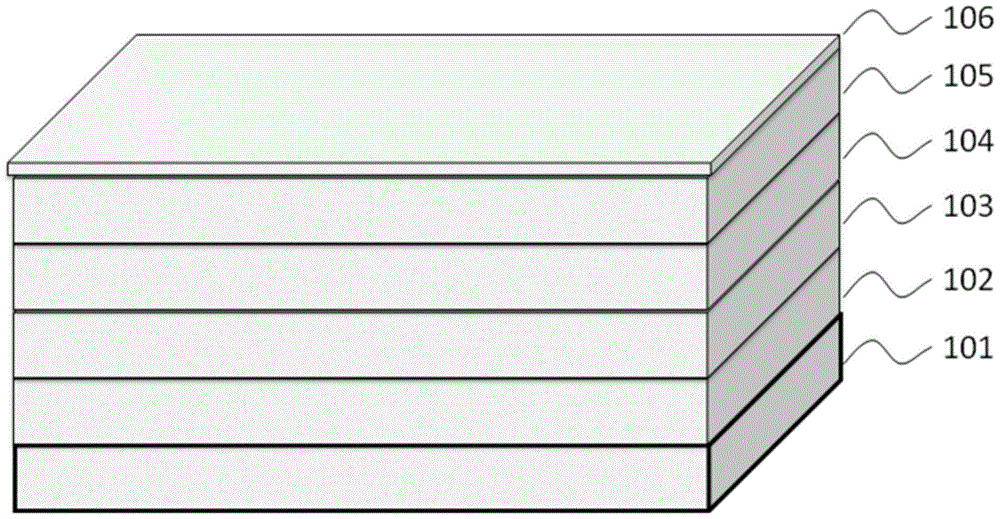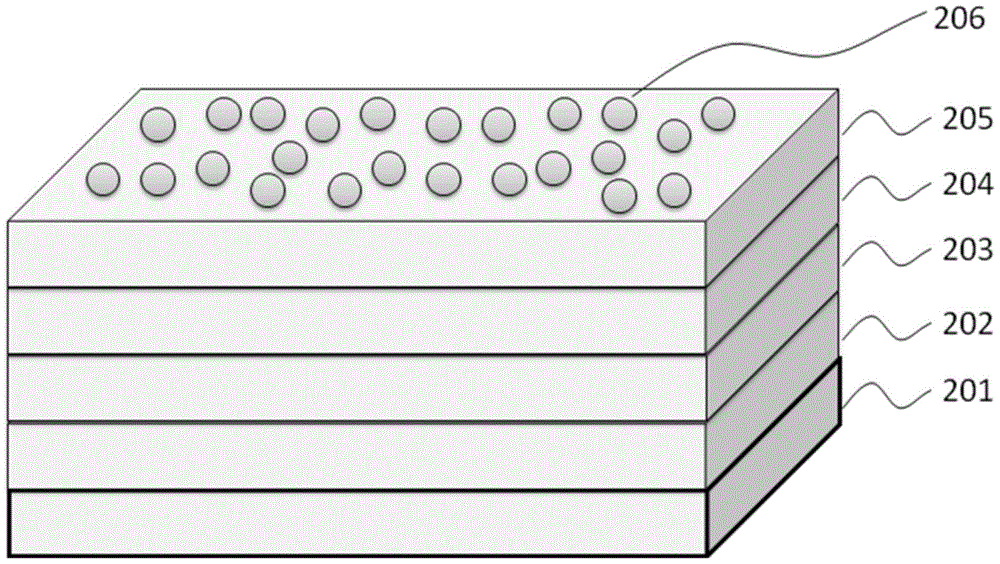Light-emitting diode led growth method with p-type layer roughening
A technology of light-emitting diodes and growth methods, which is applied in the field of LED growth with roughened P-type layers, can solve problems affecting chip technology, device structure damage, etc., and achieve the effect of improving light extraction efficiency
- Summary
- Abstract
- Description
- Claims
- Application Information
AI Technical Summary
Problems solved by technology
Method used
Image
Examples
specific Embodiment 1
[0059] GaN blue LED with roughened P-type layer (using GaN spherical crystal as roughening medium)
[0060] 1. On the Veeco M℃VD K465I machine, use a patterned sapphire substrate. When the surface temperature of the substrate material (Figure 2201 layer) rises to about 530℃, keep the growth pressure at 500 Torr. Pass trimethylgallium (60ml / min) and ammonia gas (NH 3 )50l / min for 3 minutes, trimethylgallium and NH 3 At this temperature, it decomposes and reacts chemically to form an amorphous buffer growth layer with a thickness of 20nm.
[0061] 2. Increase the temperature of the reaction chamber to 1000°C. At this time, the buffer layer undergoes decomposition and polymerization to form uniformly distributed nucleation islands. Then, on this basis, the pressure is maintained at 500 Torr, and trimethylgallium (200ml / min) and NH 3 50l / min reaction for 30 minutes. This growth process can make the crystal nucleus islands grow and merge, without doping any impurities to form a...
specific Embodiment 2
[0068] GaN blue light LED with roughened P-type layer (using AlN spherical crystal as roughening medium)
[0069] 1. On the Veeco M℃VD K465I machine, use a graphic sapphire substrate, when the substrate material ( figure 2 When the surface temperature of the 201 layer) rises to about 530° C., the growth pressure is maintained at 500 Torr. Pass trimethylgallium (60ml / min) and ammonia gas (NH 3 )50l / min for 3 minutes, trimethylgallium and NH 3 At this temperature, it decomposes and reacts chemically to form an amorphous buffer growth layer with a thickness of 20nm.
[0070] 2. Increase the temperature of the reaction chamber to 1000°C. At this time, the buffer layer undergoes decomposition and polymerization to form uniformly distributed nucleation islands. Then, on this basis, the pressure is maintained at 500 Torr, and trimethylgallium (200ml / min) and NH350l / min reacted for 30 minutes. This growth process can make the crystal nucleus islands grow and merge, without doping...
PUM
| Property | Measurement | Unit |
|---|---|---|
| thickness | aaaaa | aaaaa |
| thickness | aaaaa | aaaaa |
| thickness | aaaaa | aaaaa |
Abstract
Description
Claims
Application Information
 Login to View More
Login to View More - R&D
- Intellectual Property
- Life Sciences
- Materials
- Tech Scout
- Unparalleled Data Quality
- Higher Quality Content
- 60% Fewer Hallucinations
Browse by: Latest US Patents, China's latest patents, Technical Efficacy Thesaurus, Application Domain, Technology Topic, Popular Technical Reports.
© 2025 PatSnap. All rights reserved.Legal|Privacy policy|Modern Slavery Act Transparency Statement|Sitemap|About US| Contact US: help@patsnap.com



